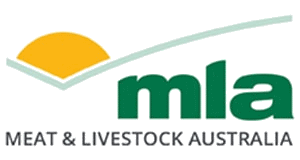Refined methane emission predictions forge ahead
27 March 2025
Findings from several research projects which MLA and ALFA have funded on behalf of lot feeders suggest that the current equation used by Australian National Greenhouse Gas Inventory process to calculate the enteric methane emissions from Australian feedlot cattle (Moe and Tyrell, 1979) may overestimate emissions. This is the second article in a series covering this topic – read the first article here: An opportunity to redefine how methane emissions are predicted.
A new equation has been developed as part of a project by MLA and the University of New England: Assessment of the Australian Feedlot Enteric Methane Inventory Equation.
Confirming the overestimation
The current equation, Moe and Tyrell (1979), was originally chosen for its utility to cater for different fractions of dietary carbohydrates and therefore cater for a range of feedlot cattle diets. However, with continual research in this area, it has become evident that there is an opportunity to redefine how methane emission predictions are calculated.
The project pulled together existing data from past MLA research at the University of New England (UNE), and also conducted a large study with different diets containing a matrix of fat and roughage concentrations. Professor Fran Cowley, University of New England (UNE) and her colleague Dr Amelia de Almeida led the research on this project and explained the large matrix study.
“Methane emissions data was collected from cattle fed sixteen different combinations of dietary fat and neutral detergent fibre (NDF) inclusion rates to try and build a database that covered the range of different diets we would typically see in Australian lot feeding,” Fran explained.
Overall, 384 individual measurements of methane (collected in gold-standard respiration chambers) were analysed. Through these measurements, a large over-prediction was demonstrated when using the Moe and Tyrell (1979) equation.
“We confirmed the current equation predicted methane emissions to be on average 2.4 times larger than they actually were.”
Creating the best fit
After confirming there was an over estimation, several other existing equations were tested.
“Some of the equations worked for particular diets but they didn’t hold across a range of different diet types we see in Australian feedlots,” Fran explained.
“The next step was to take what we had learnt and develop our own equation.”
During the development of the new equations, a large range of dietary components and animal characteristics were evaluated. These components included inputs such as fat, fibre, starch, protein and animal weight.
“We settled on two different equations. Both explained 85 to 90% of the variation in methane emissions,” Fran said.
“The first equation is a simple multiplier of dry matter intake, and generally the easiest approach.
“The second equation was a slightly better fit as it allowed for more customisability when considerating inputs that are easily measured in feedlots, such as dry matter intake, dietary fibre and fat content.”
Once fully developed, the equations were then tested with a new validation database. This included 329 records collected in the gold-standard respiration chambers from a diverse range of cattle breeds, including Shorthorns, Hereford, Bos indicus crosses, Angus and Wagyu, with diets based on both wheat and barley, and steam-flaked and temper-rolled processing.
The tests results showed there was a significantly smaller over estimation when using the two new equations. Whereas the Moe and Tyrell (1979) equation over estimated daily methane production from grainfed cattle on average by 115 g CH4 per day. The new equation reduces this over estimation to just 6 g CH4 per day.
“These more accurate estimations not only help to reduce the methane footprint of feedlots, but they also allow us to understand where the emphasis of continued research in methane reduction needs to be,” Fran said.
| The Australian Lot Feeders’ Association and Meat & Livestock Australia Research and Development Committee work in a close and collaborative partnership to support projects for the betterment of the feedlot industry. You can view a list of recent project reports and publications here. |


